A Tribute to Quad
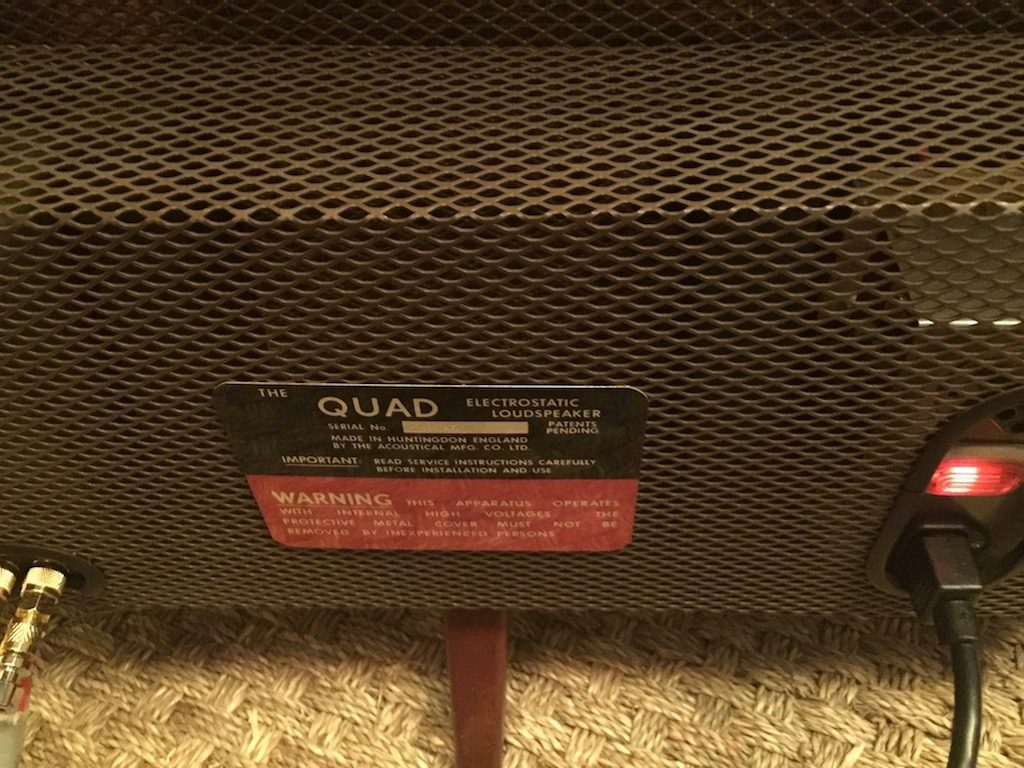
Much has been written over the years about Peter Walker’s electrostatic loudspeaker, including the wonderful book assembled by Ken Kessler, Quad: The Closest Approach.
I bought my first pair of Quad ESLs in 1973 and learned much about listening in the process of living with them as my main system during the ‘70s and early-mid ‘80s. I never sold my original pair, but after all sorts of experiments with subwoofers and add-on tweeters, I put the original ESL to the side for what turned out to be decades.
I switched to a pair of Crosby-modified Quad 63’s, which played louder, didn’t pose the same risk of gradual self-immolation through arcing of the panels and had more apparent bass. Throughout my tenure as a Quad listener, I relied almost exclusively on Audio Research amplification, which I continued to upgrade, stopping at the glorious SP-10 mk ii, the high water mark for ARC tube preamps at the time, and the later Classic 60, which had a far more modern tube sound (greater detail and image at the expense of a more bleached, less “tubey” character) than the ARC amps of old.
I enjoyed the Crosby-Quad immensely, but it never seemed as coherent as the original in the midrange. My original pair, packed for moving years ago, remained in boxes. But when we recently packed up to move to Austin, Texas (see accompanying piece, “Gone to Texas”), I decided it was time to have the old Quads restored, rather than simply moving them once again. Off they went off to Kent McCollum of ElectroStatic Solutions in sturdy shipping boxes Kent supplied.
I also packed my old Quad II amps, along with a few other odds and ends, including an old Technics SP-10 turntable that I bought new in 1973. Since we were driving from New York to Texas via the scenic route (see The War of Fog and From the Gulch to the Delta ), these pieces were delivered personally into the capable hands of Bill Thalmann, of Music Technology in Virginia, who specializes in restoration and modification of all sorts of high-end audio gear.
Bill was not only recommended by Kent, but his is the only facility in the U.S. authorized to perform the Krebs modifications to the SP-10 table.
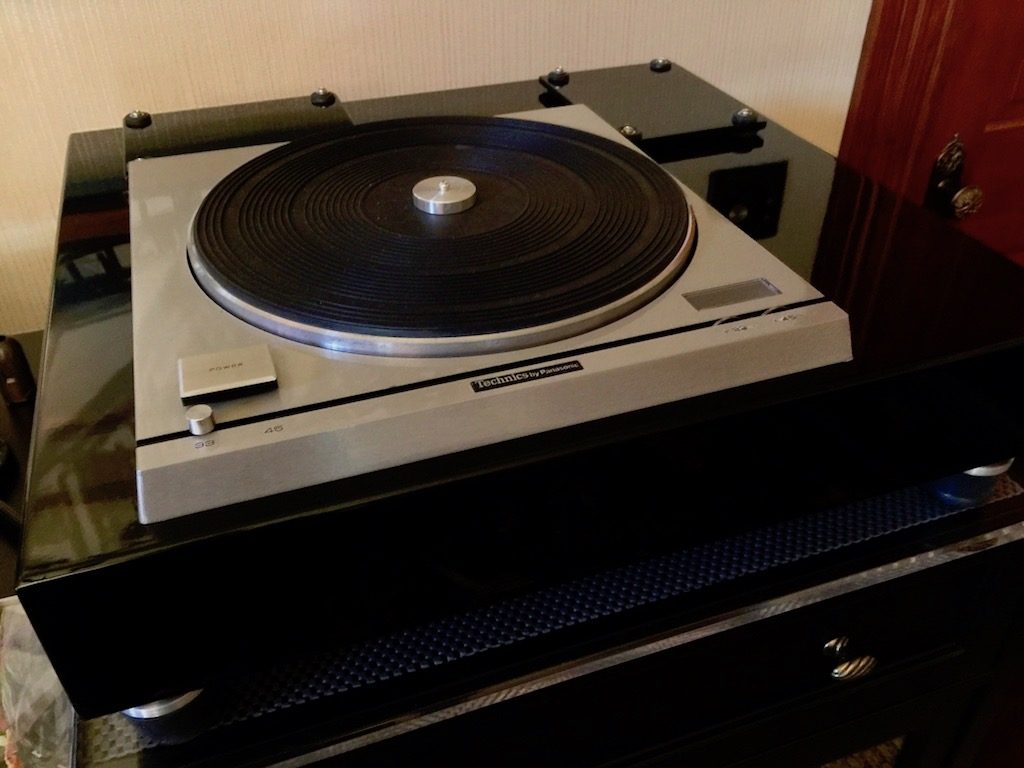
I eventually shipped Bill yet another piece, an old McIntosh MX 110z, a classic old school preamp-tuner with a vast number of small tubes on a single chassis. Bill’s instructions were to get everything working properly, replace what was needed, update and restore the turntable and supply virtually all the tubes (NOS) for the McIntosh piece.
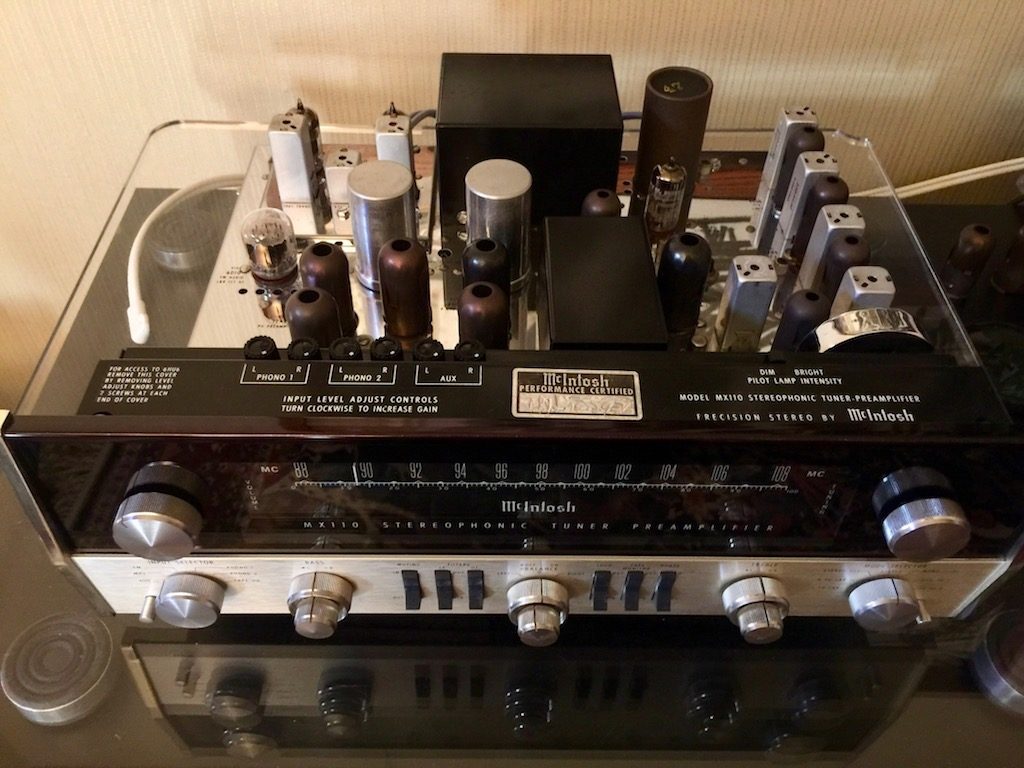
Despite my desire to keep this project within a budget, I found a pristine matched quartet of GEC KT-66 tubes for the Quad amps.
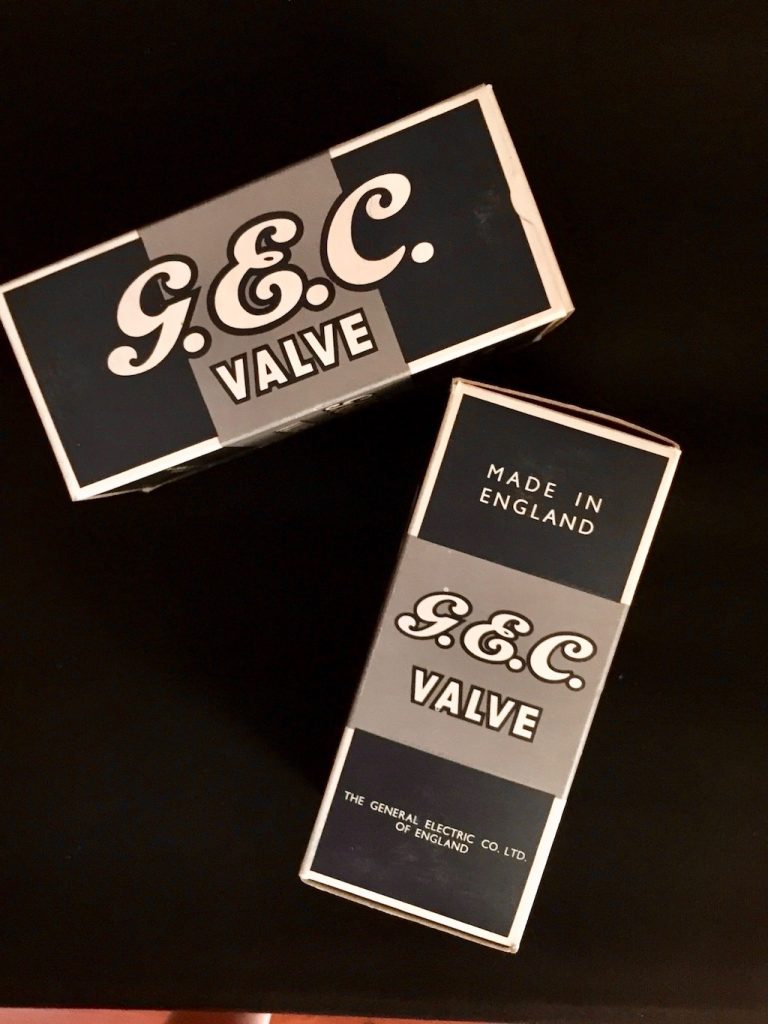
These tubes are now rare and costly, but at the time, were what Walker used for his amp. I also bought: some NOS Mullard rectifiers (also consistent with the original tube complement); and scored a coup on the driver tubes. Those are unused (NIB) GEC EF86’s that had started life as “flying lead” devices that were converted by the clever folks at Tubemonger to plug and play tubes with conventional tube pin bases. I gather than Walker preferred the Mullard, but these GEC EF86s were too cool to pass up.
The ESLs got to Texas first. The equipment in Thalmann’s hands took a little longer but he had far more to do. By the time all this vintage stuff arrived, I had already moved into my “new” old house in Austin and had set up my “big” system in a loft space in the main house. (See accompanying piece, “Gone to Texas”). The big system sounds better than it did in New York, with only a few changes made along the way, including some serious attention paid to electrical power. (I’ll update my system profile in the “About” section of this site when I get more time). That system took some time to set up.
Now, here comes the fun part.
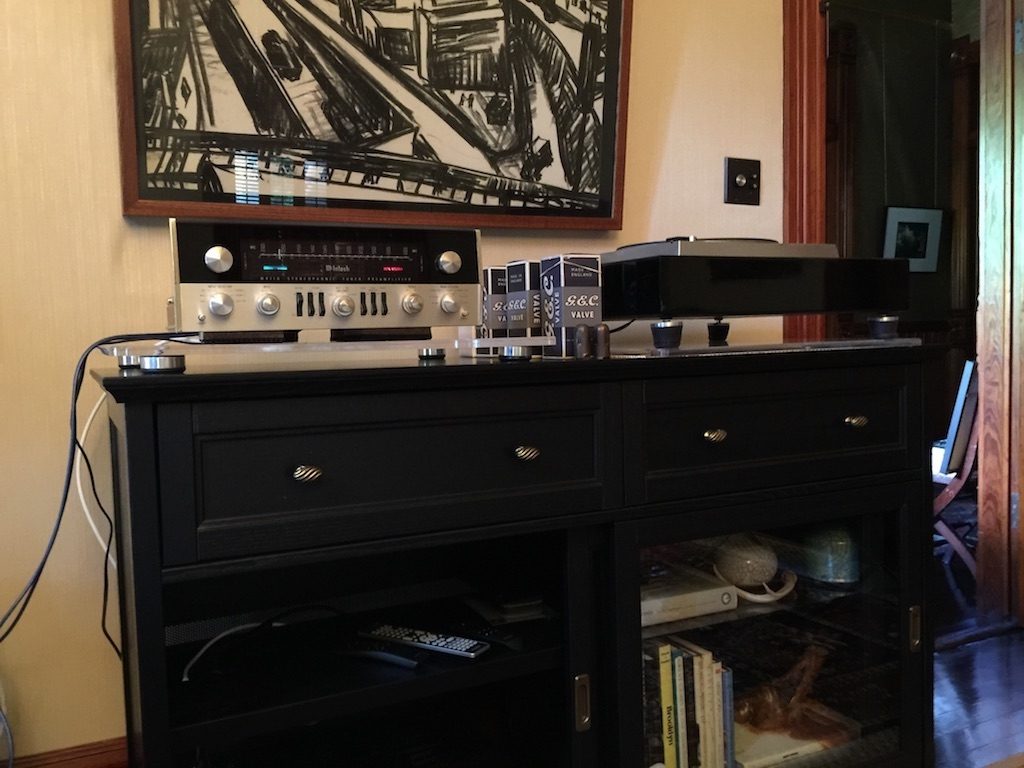
The vintage system, while still awaiting installation of a tone arm, took far less time to set up and dial in. As a stopgap, I bought a used, cheap CD player from the Sound Gallery http://soundgalleryaustin.com , a local shop that is a time warp of ‘70’s era receivers, speakers you long forgot about, and a wonderful collection of vintage audio/electronica posters that are part of the owner’s collection. (I asked- they weren’t for sale).
Without getting into a CD v. vinyl debate, let me assure you that the CD player – an old Cambridge Audio unit that was modest and nowhere near state of the art when new– was not going to extract the maximum from this Quad-based system. But, here’s the killer: that vintage system is just so musically engaging, it almost doesn’t matter. Obviously, it will sound different once the turntable is finished, but for now, I’m happily using this until I buy a vintage arm, figure out cartridges, loading, step up devices, etc.
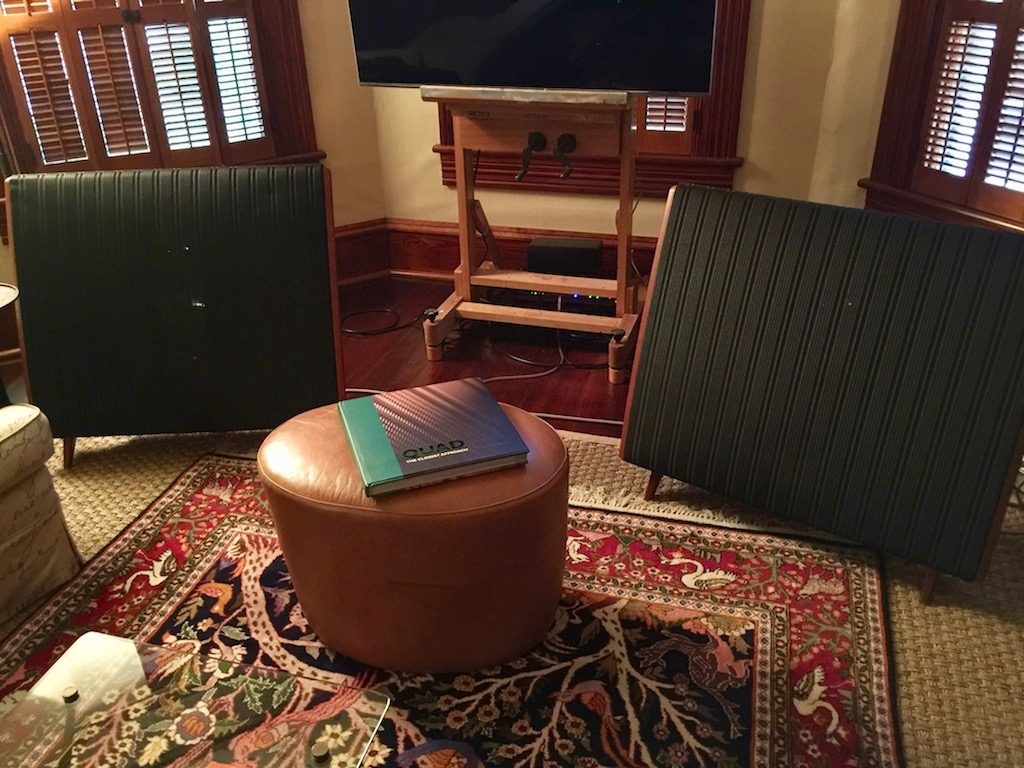
Though Quad listening conjures up images of chamber music, small jazz combos and female voice, it isn’t nearly as hobbled by limitations as the stereotype. No, I don’t get the deep bass thwack of a big system with monster subwoofers and oodles of power, but I don’t need it. What bass is there is taut, full of tone and spatially correct. Just as important, it is utterly seamless with that peerless Quad midrange—a spooky, see-through image that is fully fleshed out, clear and articulate without distracting artifacts that remind you that you are listening to a reproducing system. It’s spooky because, on some material, it’s like nothing is there but the music. Given all the hyperbole about hi-fi, you’ve no doubt read such statements before (“the equipment disappeared”) but experiencing this is a different matter: you wind up listening through and beyond the system to the pulsing heart of the music in a way that most hi-fi gear only suggests in the broad strokes –and the coherency within its range, on axis, remains unmatched some 60 years after its introduction. The quality and character of the sound is the same, top to bottom. This is why the original Quad ESL has achieved well-deserved cult status, despite its inherent limitations, even using a cheap, old CD player as I am, for now, as a source.
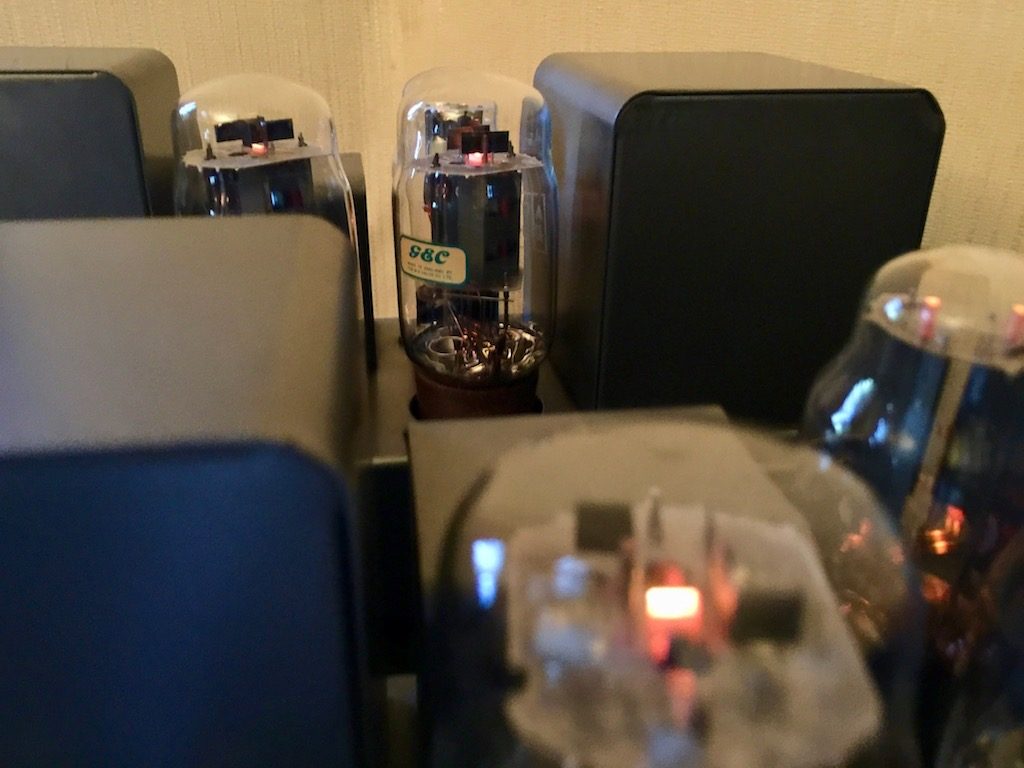
Am I advocating such a system to readers? Probably not, for several reasons. First, unless you buy freshly restored gear from a reputable source, you’ll be buying some pretty old pieces and then having them restored. If you budget this without going crazy on the amp tubes as I did, you are probably looking at:
- $3,500 for a used, previously restored pair of Quads and a little more if you have to buy the speaker and have it freshly restored by one of the top shops, like Kent’s. A fresh restoration is important, particularly if no protection circuitry had been installed because these speakers are notorious for arcing, which eventually compromises the panels.
- a few thousand bucks for pair of old Quad IIs restored (there is a reboot of the amp that costs about the same, used). You can probably find the amps for less, but add the cost of a thorough go-over by a tech (unless you have DIY skills)[1] and decent tubes and you’ll be in that price range anyway. Mine run on UK voltage, so you may need to add the cost of a step up transformer if you find such a pair. Add even more if you are planning on using GEC KT 66 tubes and NOS rectifiers and driver tubes. Other vintage amps can be substituted, but I think with the cost of restoration and tubes, you will be in the same ballpark, more or less, pricewise. See http://www.quadesl.org/index.php/hard-core/amplifiers/christian-steingruber
When I first got my Quads ESLs, I built a Dynaco ST-70 kit that worked fine as a starter amp; those are available used, or as kits of parts with various mods and upgrades through third party suppliers. I did replace the Dynaco soon after I got the Quad ESLs with an Audio Research amp circa 1974, which performed very well. But, that’s an antique now too, and would need some attention to bring back to spec. (I still have mine, but haven’t gotten around to refreshing it for 15 years, so it will need a re-cap, tubes and a few other parts).[2]
- a few thousand bucks for a high quality vintage tube preamp, brought to spec and re-tubed. I considered an ARC SP-3, which I had owned when it was new, but since it would require updating and cost more than the McIntosh, I wasn’t that excited by the prospect, particularly since I had already lived with an SP-3 for many years. A Marantz 7 (tube) would excite me, but at a price I wasn’t willing to pay in today’s market.
- Another few thousand, more or less for a good source; definitely more if you are planning on playing LPs given the cost of a good record player with a decent tone arm and cartridge.
- Wire and miscellaneous can be fairly cheap. I’m using Canare 4S11 speaker wire, which is very cost effective and some basic Wireworld interconnect and stock power cords. You can go “full audiophile” on this stuff, which will add to the price, but it is unnecessary in my view and in some ways, contrary to the spirit of the whole endeavor. When I first owned the Quad ESL, there were no fancy audiophile cables- zip cord of different gauges was the choice for speaker cable and there were no commercial high end interconnects- a DIY set probably exceeded what you could buy as a finished product in the early ‘70s.
So, I’m figuring $10-14,000 for such a system; one that is not particularly décor friendly unless you are into a post-war British industrial aesthetic; a system that suffers from some inherent limitations in loudness, range and dynamics if you listen at ear shattering levels or subsist mainly on a diet of heavy rock and one that has a narrow sweet spot due to the design of the tweeter panel. It is in some ways a niche system, but it is also a very valuable listening tool.
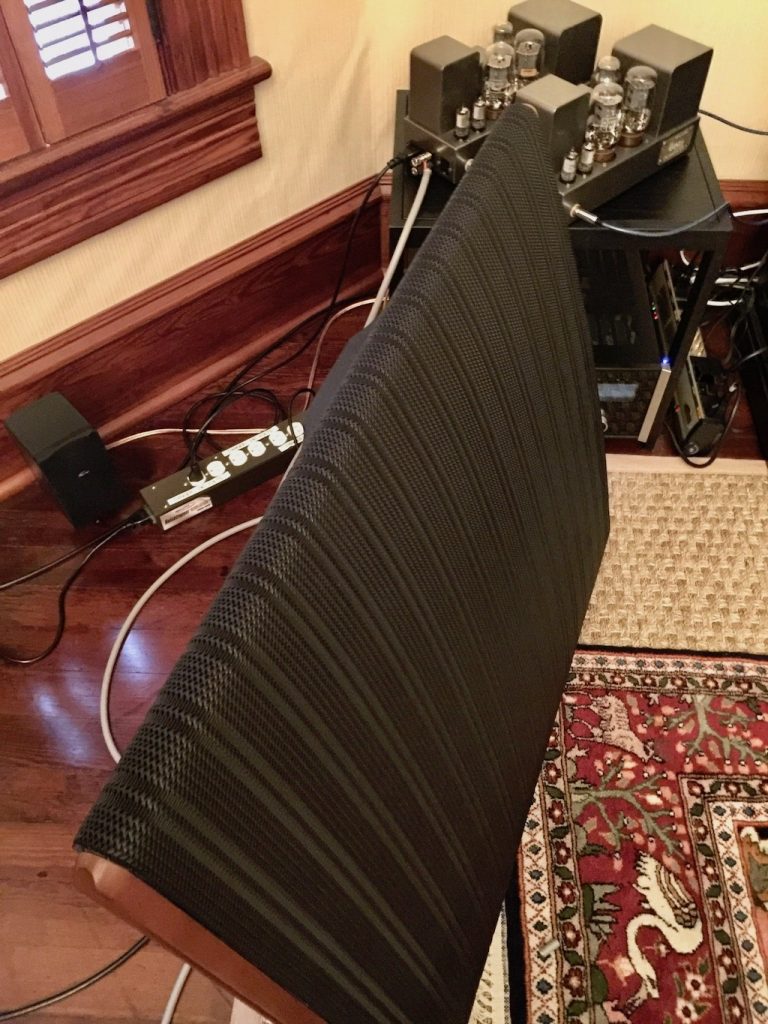
At the time of this writing, I had spent some hours during the day listening to a range of material on the Quads- from early Traffic, to some obscure progressive rock, to piano and some bluegrass. Later the same night, I went upstairs and fired up the bigger system. It only became coherent when it was loud enough to energize the room; had considerable midrange purity by virtue of a horn with no crossover driven by the highly regarded Lamm SET amps, supplemented with multiple woofers and subwoofers; it delivered deep bass and an overall far larger, more dynamic presentation, at an exponentially greater cost.
It was a “better” system in many ways by today’s standards, but wasn’t more musical or engaging than the Quad –based system. The big system had more power, more bass and was equally clear and articulate, but didn’t have the top to bottom coherence of the Quads. This did not make me dissatisfied with the bigger system- but made me realize there was so much “right” about the Quad that it showed me how far hi-fi hadn’t come. As one contributor to an Internet forum commented, it makes you question exactly what we are trying to achieve, at far greater cost, given how much music a system based on 60-year-old speakers can deliver. (The Quad amp is even older).
So, I’m not encouraging you to go out and buy such a system, though having one as a second system is a luxury. Given my listening habits, it also wouldn’t take much for me to use this vintage system as my main system (once the turntable is complete) if I decided to do so.
Whatever your personal listening preferences and budget, I would encourage you to find an opportunity to listen to a pair of old Quads that have been brought to spec and used with an appropriate amplifier. I suggest this even if you have heard the Quads at sometime in the distant past. (I certainly had a memory of what they sounded like from the era when I was using them, but it came nowhere close to how good they were in reality, after being restored, along with the companion amp). I suspect it will make you reexamine what we are chasing in the world of high-end audio when Peter Walker and company got it so right 60 years ago. In listening and commenting on records, I hope to use both systems at times to make evaluations.
Bill Hart
Austin, TX.
August, 2017
__________________________________________________________________________________
[1] Here is an informative site, on of many, given the number of Quad devotees around the world: http://www.keith-snook.info/quad-ii-valve-power-amplifier.html
[2] My thanks to “Rob” for a reality check on pricing. Rob is another longtime Quad owner and added that “the Scott 222 tube integrated with phono stage can be had for under $1000 and it sounds wonderful on 57s.”
Leave a Reply
You must be logged in to post a comment.